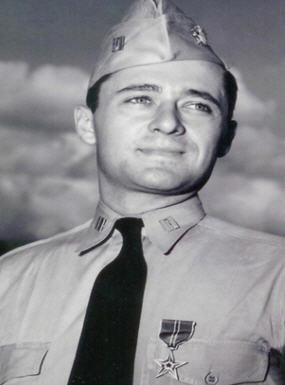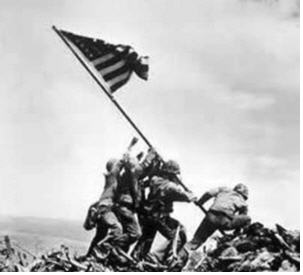Midway and Her Truth

(LT Mac Showers at War’s end).
I am supposed to give a pitch on some history related to the great gray ship now permanently moored in the harbor at San Diego. For all of us who have gone down to the sea in ships, she is a special reminder. Her status is protected, for a while, anyway, unlike her proud sisters. Many pals rode them, and I had a chance to walk some of their decks underway: Coral Sea. Ranger. America. Kitty Hawk .Forrestal. Nimitz. Stennis. Each has a story, and a pride of shared heritage and history.
What happens to them at their end is sad but inevitable. They are towed, lifeless, to breaking yards and systematically broken into smaller and smaller pieces and trucked away to become something else. The people who volunteer on Midway walk her decks, still intact, and the memories of her sisters swirl around there. There is a picture I found, and lost, of a stocky figure at the pier in Bremerton looking at Ranger, sadly slumped to port. It is me, lost in memory of when that ship changed all our lives. Now she is gone.
Midway is a WWII marvel, when launched she was the biggest thing that ever floated for purposes of national security. You should experience living on her, when she roamed the World Ocean, built to the standards of war. I was going to talk about how she got her name, since it means a lot to those of us who were in her extended family.
The short answer is that Midway was the biggest naval battle since Trafalgar, and the biggest new warship should be named to honor it.
The short answer always lacks a bunch. First, I was going to start with the story of the battle that gave her the famous name. To do so, I was not going to mention the heroes who actually made it happen. Except Ensign George Gay, who was a figure in two wars. The one against the Japanese Kido Butai, the massive battle fleet, and the one in our Navy that lasted much longer.

I had a chance to meet George one time at the big fly-in at Oshkosh, Wisconsin. He was an affable man, the “Sole Survivor” of his squadron that sacrificed their lives in the assault on the Japanese Fleet. George floated amidst the chaos of the battle that cost the Japanese their war. It is said that before Midway, the US Navy never won a battle against Japan’s forces. After Midway, the Americans never lost. Which naturally leads to a discussion of the now-unclassified details of how the enemy intentions were ascertained, and how the sacrifice of George’s squadron was also part of a war within our Navy. That is where it gets fun.
And a little slow for folks who have the short answer about the victory. It was not until fifty years had passed, and our legendary pal Mac Showers was kindly allowing me to recount his extraordinary career. It was then that he revealed how important George’s story was, and how it saved the advantage that enabled victory in the Pacific.
I will have to keep it all short and simple, since the nuance of the conflict was about saving careers and reputations in another age. The problem for Station Hypo in lovely Hawaii was being at odds with Washington. Based on Jasper Holmes’s trick to find “AF,” the battle was won. The problem was that it made Washington look bad. And hence the next battle, which was conducted by Washington to get the credit for victory.
In order to do so, some significant and appalling tricks were played. A journalist not indoctrinated to the secrets of the code breakers saw some of the messages about the Japanese Order of Battle. He published them in a newspaper owned by an opponent of FDR. It was the sort of thing that would have caused the Japanese to change their code system and left the Americans in the dark for future operations.
See, Mac was there when Jasper Holmes outlined the bold plan to identify the Japanese target. It happened at the corner of his desk down in the Dungeon, the basement room where a small cadre of Naval personnel analyzed the encrypted communications and tried to divine their meaning. The target was only identified by the translated letters “AF.” The specific identity was unknown. The folks at Station Negat in Washington were convinced it was in Alaska. The crew in Hawaii, at station Hypo, thought it was Midway Atoll. Jasper stopped at the corner of Mac’s desk one afternoon and outlined a plan. It was elegant. There was an underwater cable that could be used to communicate directly with Midway and was not vulnerable to radio exploitation. He suggested they use that secure means to contact the base and tell them to transmit a message, ‘in the clear’ that they were having problems with their air conditioning. Then they would wait and see what the Japanese said about it.
The men were unique. Some were like Jasper, a former submariner, and Mac, a junior “Deck” officer. There were also linguists, yeomen, and radio specialists. Some, like Joe Rochefort, had been part of an ambitious program to send Naval officers to Japan in peacetime to learn the language and customs of the nation that seemed destined to be an adversary. Joe led this strange and talented team to produce intelligence “truth.” And since it was not the same truth as what Washington believed, Joe was ordered to a new position: construction and command of a floating drydock. Removed from codebreaking and consigned to the great enterprise in a means to keep him away from the Pacific Command.
It took Mac until the Reagan Administration to get the right recognition for Joe: presentation of the Distinguished Service Medal. By then, most of the partisans in the internal war had passed with their reputations intact. And George Gay? George sold his account of the battle at airshows. But it was much more. With the conflict between the Fleet and Washington, his survival became a means of accounting a version of the truth that the Japanese might have believed. Which takes us to the nature of the word “truth.”
The version assigned to George was true enough, even if much of his part of the momentous day was spent under a kapok life vest, attempting not to be seen. Mac helped craft that version of the truth. George was the human part that made it believable.
In fact, creating alternate truth was one of Mac’s jobs: protecting the vital advantage of The Big Secret. He was good at it, and as the war drove west across the broad Pacific he kept at it. While assigned to the forward Headquarters at Guam, he was responsible for reviewing all outgoing media stories and images taken in the savage fighting that would finally end it. One of them is something that is familiar to you, and now stands as an icon for struggle. You can imagine what Mac thought when he got to it in the thick sheaf of materials he reviewed for release. He thought it was pretty good, and pretty true. I think we agree with his release assessment:

Copyright 2021 Vic Socotra
www.vicsocotra.com
